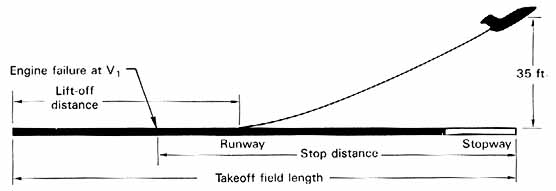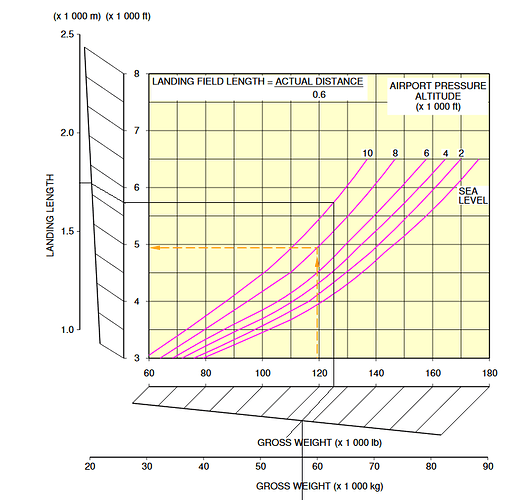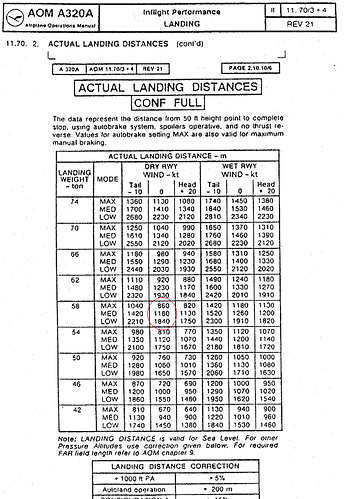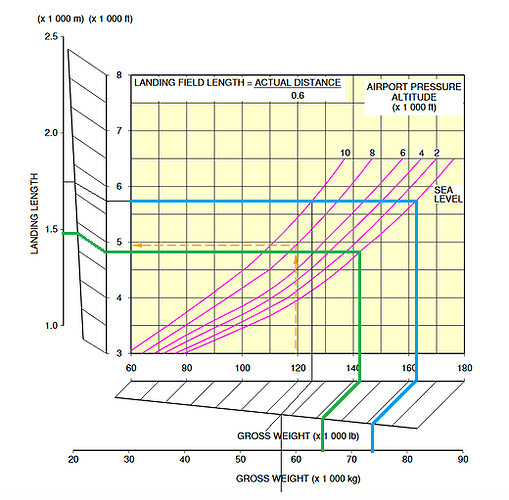What more is there to do regarding adjusting landing distances?
I know that each airplane’s fuel burn is calculated using distance, not time, and then modified using the absolute value of the difference between the player’s chosen speed and the default aircraft speed. Not 100% accurate, but close enough. Its certainly an easy way to modify fuel burn rates.
Regardless, if you took the kgs/km burned and multiply it by the aircraft default speed, you would get the kgs/hour. That’s the number that could be used for the reserve fuel and it could be a “static” number for each aircraft variant. After that, wouldn’t just taking the MZFW + this calculated reserve fuel value make the “max ‘actual’ landing weight”? After which, you simply look at the landing chart (don’t you have the charts from when you started the game?) to determine the “max landing distance.”
I know that there is a large amount that needs to be changed, but even if you just changed regional jets and the narrow body mainline jets in the short term, and then phase in various other classes of aircraft over time, that would be huge for the players.
As another idea, you could simply make the “max landing distance” equal to 95% of the max takeoff distance. That would make the game’s max landing distance 5% less than the max takeoff distance, allowing for greater and immediate usability in the game. I don’t know all of the backend coding, so I don’t know the varying degrees of coding required in these calculations. I’m simply trying to throw out various alternative ideas that may do something similar in the short term, and would provide additional time for a more thorough and complete revamp of the other performance calculations.
Keep in mind, the 3,000 kg reserve was very much made up. To be more accurate, it would need to be based upon one hour of fuel burn and could be based upon data that you already have regarding fuel burn. (see above) I would do only one hour as it applies the most amount of times and would provide the most amount of operational flexibility.
I do not fly the A320, so I do not have intimate knowledge of it, but after a brief google search, I found this document: A320 Performance
On PDF page 27, or document page 2-1-1, the MZFW and MLWs are located. I have not spent a long time studying the manual, so I don’t know what the various models are referring to; however, I can quickly see that some MZFWs are different, thus allowing for some more “wiggle room” regarding the actual landing weights.
Even if the max landing distances only changed by 5%, that could lead to significant gains in usable payload for these aircraft types because the difference between “minimum landing distance” and the “max landing distance” would change at a higher percentage.
Random example: (not based upon a real aircraft)
Original Min Landing Distance: 2000
Original Max Landing Distance: 2400
Difference: 400
New Min Landing Distance: 2000
New Max Landing Distance: 2300
Difference: 300
Now lets say that the calculated landing weight was at its maximum and the field was 2300 meters long. The payload would have been restricted to 75% using the original numbers, yet would be not restricted at all using the new numbers. In this case, the mere 100 meter change in the max landing distance (4.2% reduction in the max landing distance) had a 25% difference in payload. If the plane could carry 150 passengers, that would be a difference of 37 seats.
I completely recognize that there is a time element in making these changes, yet I feel that there could be a significant benefit made to the game if even a small change was made regarding landing performance.
Sidenote:
As I am writing this, I am wondering if AS calculates the weight of the various individual seats, onboard flight attendants, cargo containers, etc into the individual aircraft’s weight calculation as that would obviously have other ramifications. I don’t feel that these should necessarily effect landing weight from a simplicity standpoint (in the game), but would obviously effect landing in reality.








